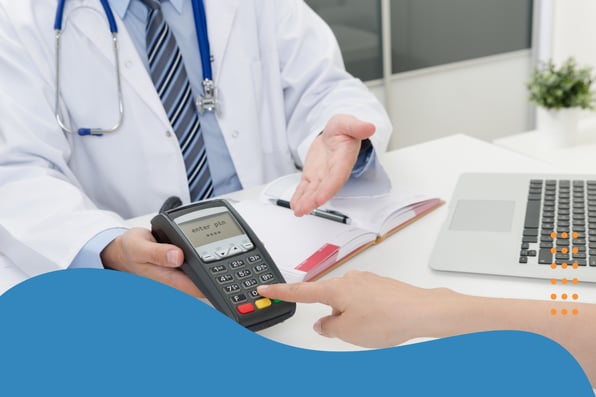Actionable Analytics: Which Revenue Cycle Management Metrics Should You Be Paying Attention to?

The Importance of Real-Time Metrics and Analytics
Tracking metrics and analytics are critical to the success of any business strategy. In healthcare, they are even more significant for several reasons.
First, real-time metrics provide an overview of a healthcare practice’s financial health, allowing for timely interventions and strategic decisions. Keeping a close eye on these metrics helps you identify revenue leakages, optimize billing processes, and maintain a steady cash flow.
Next, a smooth and efficient billing process directly translates to a positive patient experience. Monitoring and acting upon relevant metrics helps reduce billing errors, expedite claim settlements, and save patients from undue financial stress. A satisfied patient is more likely to return and recommend your practice to others, which drives growth and reputation.
Real-time metrics also offer insights into a practice’s operational aspects. These numbers shed light on areas that need improvement, from appointment scheduling to claim denials. Addressing these issues in real time can enhance operational efficiency, reduce overhead, and optimize resources.
Finally, metrics and analytics give decision-makers the data they need to make informed choices. Whether expanding the practice, investing in new technology, or revising billing protocols, real-time data ensures you back every decision with concrete evidence.
Which Metrics Should Your Healthcare Practice Be Focusing on?
Healthcare practices deal with vast amounts of data daily, so it’s critical to identify the metrics that truly matter. These metrics can transform how a practice operates when monitored and acted upon. They can boost financial health, operational efficiency, and patient satisfaction.
Consider seven of the most important metrics your healthcare practice should focus on.
1. Days in Accounts Receivable (Days in AR)
Days in accounts receivable — often abbreviated as days in AR — represent the average number of days it takes for a healthcare practice to collect payments owed to them after a patient’s visit. It measures the efficiency of a practice’s billing and collection processes.
A lower Days in AR shows that a practice collects payments promptly and minimizes delays. It is a characteristic of efficient revenue cycles, freeing up capital to reinvest in patient care, adopt new technologies, and expand your services. Therefore, a streamlined Days in AR is proof of your practice’s operational efficiency and financial health.
2. Clean Claims Rate
The clean claims rate is the percentage of claims submitted that pass through the payer’s systems without any issues, errors, or queries. Also known as the first-pass claim acceptance rate or first-pass resolution rate, these claims are processed and paid upon first submission without requiring additional information or corrections.
Therefore, a high clean claims rate means:
- Fewer claim denials
- Faster reimbursements
- A smoother, more efficient revenue cycle
- Reduced administrative burden on staff
- Minimized chances of payment delays
It also indicates a well-trained billing team, accurate patient data collection, and efficient coding practices. That translates into consistent cash flow and more time to focus on what’s important: patient care.
3. Denial Rate
The denial rate calculates the percentage of claims that payers refuse to pay for various reasons, such as coding errors, missing information, or eligibility issues.
A lower denial rate is a positive indicator of effective billing practices. It signifies that payers accept and pay the majority of submitted claims. That means reduced revenue loss and more efficient resource usage for your healthcare practice, which boosts your bottom line.
4. Collection Rate
The collection rate is the percentage of the total allowed amount that a healthcare practice successfully collects from patients and payers. It provides insights into the efficiency of a practice’s collection processes and its effectiveness in realizing revenue potential.
A lower collection rate can indicate issues such as inefficient billing practices, unresolved claim disputes, or challenges in patient collections. A higher collection rate is a testament to better revenue collection. It thus contributes to financial stability.
5. Average Reimbursement Time
The average reimbursement time calculates the average number of days it takes for a healthcare practice to receive payment after a claim. It offers insights into the efficiency of the payer’s process and the practice’s billing and follow-up procedures.
Monitoring the average reimbursement time helps you identify bottlenecks in the payment process and take corrective measures. A shorter average reimbursement time signifies that your billing processes are efficient, which improves cash flow.
6. Charge Lag
Charge lag refers to the average number of days between the date of service and the date the charge is entered into the billing system. It provides a snapshot of how quickly a practice initiates the billing process after delivering care.
Reducing charge lag improves billing efficiency. A shorter charge lag indicates that you’re proactive in initiating the billing process so that claims are submitted promptly. This accelerates reimbursements and reduces the risk of claim denials.
7. Cost To Collect
Cost to collect calculates the total cost a healthcare practice incurs to collect payments as a percentage of the total amount collected. It encompasses all expenses related to billing and collection, including:
- Staff salaries
- Technology costs
- Overhead
A lower cost to collect is a sign of more cost-effective billing practices. By optimizing this metric, you can enhance your profitability and channel more of your revenue to patient care and growth initiatives.
Gain Actionable Insights From PUREDI
The ability to make informed decisions swiftly can determine success in today’s dynamic healthcare landscape. Therefore, understanding and leveraging these real-time data insights is paramount. Having the right reporting tools to capture, analyze, and act on these metrics is equally essential.
PUREDI’s innovative reporting tools provide real-time data insights illuminating every facet of your operations, paving the way for future growth. Utilizing these solutions allows you to inform and act on critical business decisions and keep your practice at the forefront of healthcare excellence.
Book a demo today to discover how our actionable analytics and robust software solutions can optimize your RCM processes.
Blog Post Tags
RCMGet Awesome Content Delivered Straight to Your Inbox!
Posts by topic
- RCM
- Medical Billing Software
- Outsource Your Medical Billing
- Compliance
- Physician Billing Services
- Denial Management
- AI
- Data Analytics
- EHR
- ERA
- reporting
- Automation
- Business
- Claim Scrubbing
- Coding
- Community
- Events
- LTPAC
- Medical Billing Companies
- Medicare
- Press Release
- Revenue Cycle Management
- business development
- clearinghouse See All See Less





